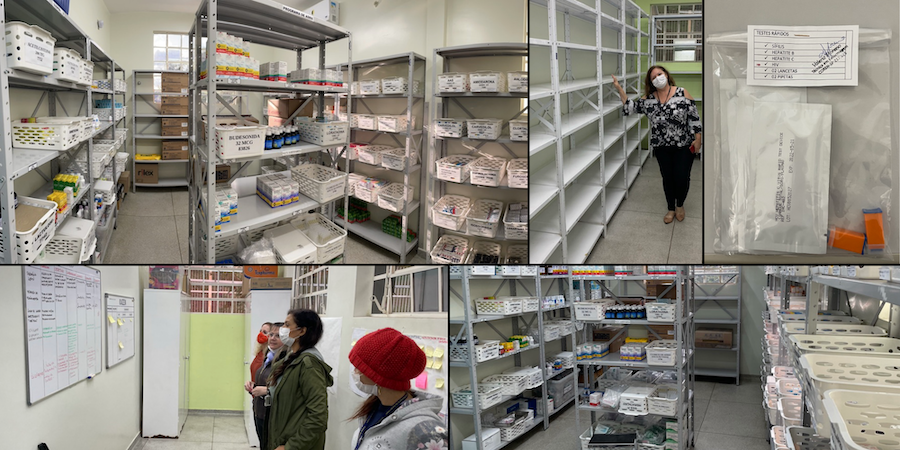
Paying our dues
CASE STUDY – This Polish debt collection company is refocusing its work around true customer needs and increasing problem visibility by implementing hoshin kanri.
Words: Piotr Kowalewski, Consumer Process Director, and Aleksander Ciesielski, Process Department Manager, KRUK S.A. – Wroclaw, Poland.
Debt collection might not appear at the top of the list of activities you might want see lean thinking applied to. At Kruk, however, we consider ourselves to be very different from our competitors: our customers (traditional debt servicing companies refer to them as “debtors”) are the people struggling with excessive debt, not the organizations supplying us the cases. We strive to build positive relationships with our clients to help them regain financial credibility, while safeguarding the social and legal norms that say that if you borrow money, you need to return it.
Our mission is to create win-win outcomes for everyone. With this in mind, we work hard to ensure our customers see us as someone who can help them get out of a difficult situation. From a value point of view, their main goal of a person in debt is to go back to their normal life. Repaying a debt in only one step in that direction: that’s why we offer them, among other things, the possibility to take out loans (which banks might not give them the opportunity to do).
Over the past 20 years, Kruk has gone from being a small firm to an international financial group specializing in debt servicing (we are currently present in seven countries – Poland, Romania, Germany, Czech Republic, Slovakia, Italy and Spain). For the past eight years this growth has been supported by lean thinking, in particular strategy deployment.
OUR JOURNEY
Our lean journey began in 2011, when the first discussions on processes and their effectiveness started to take place. These were mainly related to our implementation of a project management model that used Theory of Constraints elements to define sequences of activities and assign responsibilities and to our attempts to implement workflow-based IT systems. We realized we had to map our processes, and this was another impulse in our search for the best approach to manage the work. Along the way, it became clear that we needed to implement a systemic approach to improvement.
As a result, in 2012, we started working on identifying processes that create value – the first step towards managing them end-to-end and continuously improving them. This work took several months and resulted in the creation of a Process Architecture (process roles and rules of process governance) and the appointment of Process Owners. This made it possible to define process measures that would eventually allow us to make improvement-related decisions. You can’t improve what you can’t measure, remember?
Over the course of 2013 and 2014, we trained our Process Owners in Business Process Management, lean and six sigma. We expected this increased process awareness and the development of improvement skills to result in an improvement of our business results, but the outcomes didn’t match our expectations. This sent us back to the drawing board, as our search for the best systemic approach to managing processes resumed. This time around, however, there was a big difference: lean thinking had started to permeate the organization and to appear in more and more conversations at Kruk. In 2015, we saw it as an opportunity to achieve sustainable grow while keeping our costs down.
Building on our previous experience, the team responsible for the implementation of lean thinking was aware that to achieve an effective transformation business goals had to be linked to improvement goals. Our first attempts to do this proved quite difficult, which led us to reach out to the Lean Enterprise Institute Polska to ask for their input. That’s when we first heard the term “hoshin kanri”. It seemed promising from the very beginning, and it only took a workshop for our people to enthusiastically proclaim: “This is it!” We decided to launch a hoshin pilot project in the consumer process area in November 2015.
Around the same time, we organized a benchmarking trip to the United States for a group of key KRUK leaders, which included a visit to a branch of Wells Fargo that boasted an advanced lean management system. The visit made it possible to learn from an organization that had a lot of experience with lean (though they kept saying how much there was still to do). It also gave the Kruk team an opportunity to see white boards in action and learn how they were used to visualize results, problems and continuous improvement work.
The trip to the US represented a breakthrough in our lean transformation and provided great encouragement for our hoshin pilot. The first phase of the project took place between November 2015 and March 2016 and had several benefits:
- KRUK middle and top managers, who participated in the project, naturally and immediately engaged with hoshin and took it on as their working method;
- Workshop participants were 100% involved and they considered the time they put in as an investment;
- Everybody learned a lot about lean as a management approach;
- In a short period of time, it was possible to come up with several KPIs related to business goals (it turned out it was doable, and critical);
- Strategic goals were cascaded down several levels of the organizational structure;
- Tools supporting management and based on PDCA were developed and hoshin boards introduced;
- Routines around the work with boards were developed (leader standard work);
- Hoshin effectively opened the door to the next steps in Kruk’s lean transformation.
The business area that engaged in the pilot run became the ambassador of lean and hoshin within the organization. The manager of this area shared the outcomes of the project with his counterparts from other departments and recommended they too implemented hoshin kanri. This generated a lot of interested across the business.

The goals identified through our hoshin (and the problems connected with them) helped us to find better solutions to manage our work and take control of our processes.
Visual management tools proved very effective. A great example of this is the board created in our legal office to follow the progress of specific laws through the legislative process (it is crucial for us to keep up to date with changes in legislation, because they have a huge impact on our processes). The cards on the board, organized by color (we have neutral, positive, negative and hard-to-say new rules being enforced), represent changes in the law and help us to estimate the time we have to adapt our processes to them. We know, for instance, that a law being discussed in the Low Chamber will take approximately two and a half months to come into force.

We also use visual management boards to monitor the execution of daily goals, which helps us to maintain the right pace of work and to react to problems before they grow to become a threat to the achievement of monthly goals. To better manage the uneven flow of cases (our demand), we rely on a pull system and the cross-skilling among the teams. A simple Excel file enables us to compare daily demand with available resources; whenever we have a negative time difference, we send out a pull signal. In the Legal Department, sorting through mail alone can be a daunting task, with several bags full of letters reaching us every day. Whenever we weigh the mail and realize we won’t be able to sort through it all on the same day, we activate our support system and pull the help of our colleagues in the Piła office (around 500 kilometers away). Teaching everyone to perform mail-related tasks was time-consuming, but the system now allows us to meet our demand on a daily basis without delays.
The reason our visual management is working so well can be found in the shift we are experiencing in our culture. Even though many lean-inspired principles like respect for people have always been part of KRUK’s culture, it was only with the formal introduction of lean thinking that they have reached their full potential. One of the biggest changes is that today people are not afraid of problems, because we have showed them that problems are positive things we should embrace. It’s incredible how big a constraint a blaming culture is, and it is critical to move away from that if you want to transform your organization. Seeing your name on the board can be scary, but when you see a blame-free, positive reaction from management you suddenly understand that problems are always welcome. It is this change in leadership behavior that is fueling our transformation.

The measurements we placed on the hoshin boards became a way of mapping and monitoring key value processes, and we then used a value stream mapping exercise to prioritize improvement projects.
Another big push in our lean transformation came from the standardization of tasks. Our teams use job instructions to ensure there is a common understanding of the steps involved in our processes. Even our leaders follow standards in their work, which helps us maintain a solid lean management system: through kamishibai boards, managers track their participation in activities ranging from hoshin kanri reviews to audits, gemba walks to team meetings. Even when they are full of red post-it notes, the kamishibai boards act as important reminders for our managers that they have to be directly engaged in the improvement work.

GOING AFTER A WIN-WIN SOLUTION
Year after year, we observe significant progress in the establishment of lean as a management system and in the professional development of our people. Business results are a confirmation that this is the right direction for us. Using hoshin kanri a learning curve for us, and to climb it we constantly try to raise the awareness of our employees. Even though we understand that lean is a long-term journey, it has been great to see the direct impact it is having on our financial performance. The graphic below represents the correlation between the amount of money retrieved and the number of employees engaged.

We never lose sight of the fact that KRUK’s customers are individuals struggling with debt. With this in mind, one of the key parts of our process is reaching an agreement with them to pay their debt in installments. (This is what we refer to as the “amicable stage”.) At operational level, it is important for us to lower the lead-time to get a signed agreement, because the more efficient we are in this process, the faster it will be to generate a payment at the amicable stage. By implementing employees’ ideas and engaging them in the improvement of the process, we were able to significantly decrease this lead-time over the past two years.
The most amazing thing about working using the PDCA cycle is that you constantly discover new problems and, with them, practically unlimited opportunities for improvement. Working with a fantastic team and understanding lean better and better, we started to solve problems and truly elevate our process. The outliers in the graphic below inspired us to look further for weak points in the process and to continue improving. That’s why they call it continuous!

At the same time, we know that some customers will try to avoid repaying their debts and get out of their commitment. As a company, we need to safeguard social and legal standards that say that a debt must be paid off. Therefore, if the amicable stage fails, we pass the case to our legal department.
The first value stream mapping workshop we ran revealed that there was a need to shorten the time required to move cases from the amicable stage to the legal department. Thanks to lean, we were able to cut it in half.

Actions that are taken sooner in the process are reflected in the acceleration of the court retrieval stream. Simultaneously, together with the acceleration of the amicable stage, we get a double positive effect. It is worth mentioning that we are achieving the target percentage of customers who decide to settle amicably. (This means that the faster transfer to the next stage does not negatively impact a customer who decides to solve their problem amicably.)
HOSHIN KANRI AS A GAME CHANGER
Our lean transformation and the use of hoshin kanri have allowed us to uncover and address many problems at KRUK. We have been able to better understand our processes and improve them together as a team by developing our employees’ and managers’ skills. We find that, within our management system, the highest value is generated by a front line engaged in problem solving. (Many problems are solved there as part of the new daily routine and are never even escalated to become part of a manager’s weekly routine.)
Thank to hoshin, we have operationalized our strategy and understood the influence that each task and operation has on the overall performance of the business. Working with lean has also highlights the skills we need to execute specific processes, which in turn helps us to effectively organize our people development activities.
In order to fully realize the potential of our employees, we encourage them to develop and share ideas on how we can improve our processes. Everyone can write their idea down on the team board or submit it through our new Employee Suggestion System, which we first introduced in 2016. What’s great about it is that we built it as a game: each team is assigned a popular movie superhero and competes with other teams on who racks up the highest number of points (these are awarded for each improvement suggestion that is approved and for the completion of a quiz testing people’s knowledge of lean thinking). Over the past six months, we have observed a significant increase in the number of suggestions implemented.

This initiative is fantastic because it simultaneously encourages process improvement, increases involvement of front-line employees and focuses managers’ attention on removing obstacles and solving problems.
Three years into our journey, we can see a dramatic change in the way we work: this goes beyond visual boards, team meetings and gemba walks; our management system has become completely transparent. Before hoshin, we pushed experiments on our people, whereas now they are the ones coming to us asking for help in introducing lean principles in their areas.
As successful as we are in our lean transformation, however, we are also aware of how fragile it really is. It’s no coincidence that Jim Womack and Dan Jones nearly called it “fragile manufacturing” instead of “lean manufacturing”: being built entirely on trust, a lean management system takes years to develop and only moments to destroy. All you need is bad managerial behaviors!
The lean transformation described in the article is carried out in cooperation with Lean Enterprise Institute Polska, with Slawomir Kubiak as the leading coach supporting the project since 2015.
THE AUTHORS


Read more


FEATURE – In this article, we hear about how the lean successes of one hospital inspired an entire healthcare authority to introduce changes to their processes.


FEATURE – For many organizations, devising effective strategies remains a gap to fill and that’s something lean can help with. Michael Ballé discusses strategic thinking with our editor.


INTERVIEW – The editors of Planet Lean and Lean Post recently met with a senior executive of Turner Construction in New York City. Together, they discussed leadership development, respect for people, and the future of the industry.


CASE STUDY – How do you keep up with a market changing at the speed of light? The Chief Inventor of an Australian digital company explains how they are using lean to safeguard their future.

